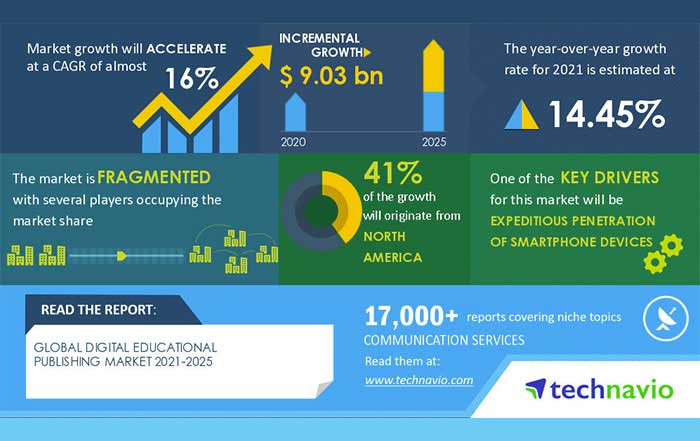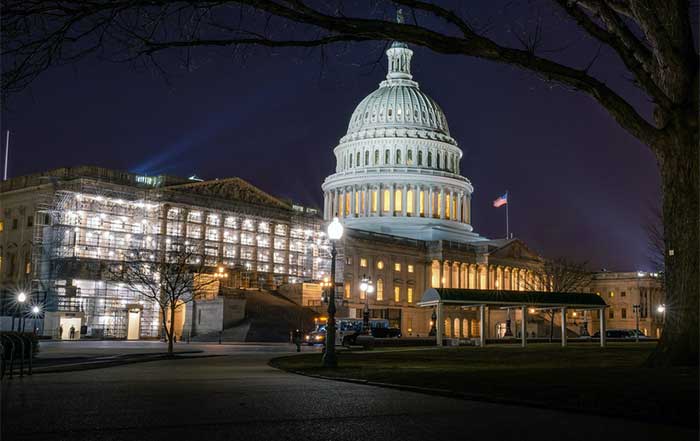Digital Educational Publishing Market to grow by USD 9.03 billion during 2021-2025
Technavio has been monitoring the digital educational publishing market and it is poised to grow by USD 9.03 billion during 2021-2025, progressing at a CAGR of almost 16% during the forecast period. The report offers an up-to-date analysis regarding the current market scenario, latest trends and drivers, and the overall market environment.
Impact of COVID-19
The COVID-19 pandemic continues to transform the growth of various industries, however, the immediate impact of the outbreak is varied. While a few industries will register a drop in demand, numerous others will continue to remain unscathed and show promising growth opportunities.
Digital Publishing Market by Type and Geography - Forecast and Analysis 2021-2025: The digital publishing market has the potential to grow by USD 65.31 billion during 2021-2025, according to Technavio.
Digital Education Content Market by End-user and Geography - Forecast and Analysis 2021-2025: The digital education content market size has the potential to grow by USD 42.93 billion during 2021-2025, according to Technavio.
The market is fragmented, and the degree of fragmentation will accelerate during the forecast period. Bertelsmann SE & Co. KGaA, Cengage Learning Holdings II Inc., Georg von Holtzbrinck GmbH & Co. KG, Instructure Inc., John Wiley & Sons Inc., Lagardere SCA, McGraw-Hill Education Inc., Pearson Plc, RELX Plc, and Scholastic Corp. are some of the major market participants. Although the expeditious penetration of smartphone devices will offer immense growth opportunities, the increased availability of open-source materials likely to pose a challenge for the market vendors. In a bid to help players strengthen their market foothold, this digital educational publishing market forecast report provides a detailed analysis of the leading market vendors. The report also empowers industry honchos with information on the competitive landscape and insights into the different product offerings offered by various companies.
Technavio's custom research reports offer detailed insights on the impact of COVID-19 at an industry level, a regional level, and subsequent supply chain operations. This customized report will also help clients keep up with new product launches in direct & indirect COVID-19 related markets, upcoming vaccines and pipeline analysis, and significant developments in vendor operations and government regulations.
This study identifies growing government initiatives to improve digital education technology as one of the prime reasons driving the digital educational publishing market growth during the next few years.
Technavio is a leading global technology research and advisory company. Their research and analysis focuses on emerging market trends and provides actionable insights to help businesses identify market opportunities and develop effective strategies to optimize their market positions. With over 500 specialized analysts, Technavio's report library consists of more than 17,000 reports and counting, covering 800 technologies, spanning across 50 countries. Their client base consists of enterprises of all sizes, including more than 100 Fortune 500 companies. This growing client base relies on Technavio's comprehensive coverage, extensive research, and actionable market insights to identify opportunities in existing and potential markets and assess their competitive positions within changing market scenarios.




